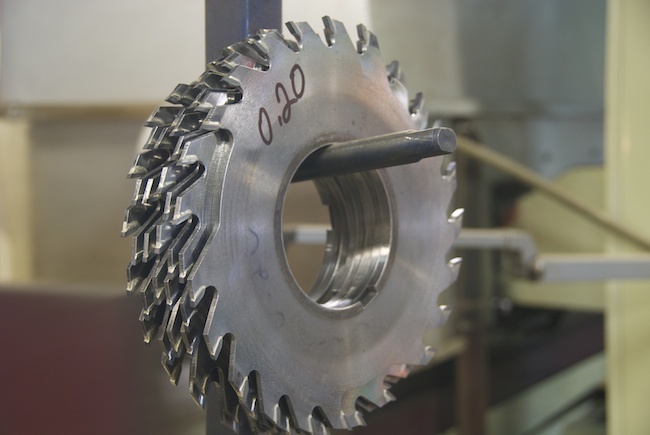
Features
Saw Filing 101: Adjusting with a market downturn
March 27, 2023 By Paul Smith
 Photo: Annex Business Media
Photo: Annex Business Media Years ago, forecasting, when it came to sawmills, dealt with seasonal weather issues and having enough logs to operate. Today’s forecasters are looking at so much more; but it pretty much all boils down to profits and bottom lines.
With increased operating and log costs and drops in the lumber market, many sawmills will be searching for ways to hold on to the profits they were experiencing during 2022. And one thing mills are constantly looking at is yield. How can we get more lumber out of the same log? Although thin kerf technology has existed and even been practiced for a couple of decades, the various approaches and mechanics used to obtain thin kerf have been both debated and even challenged.
At first, the approach to thin kerf was to reduce plate thickness and honestly most mills had a sizeable amount to work with. However, the thinner the plate became, the more attention and maintenance were needed in machine centres and filing rooms. The thinner the plate, the greater the margin of error in benching, tipping and grinding. Thinner plates are much more flexible and require greater attention to detail on the bench. Even small errors will result in poor cutting accuracy. Fortunately, in new sawmills today, machine centres and gangs have increased stability, weight, and accuracy to be able to handle the thinner plate thicknesses.
But not all mills have new machine centres in the budget. These mills can approach thin kerf from a different perspective: the tooth. There are a few different avenues to reduce the side clearance to as little as .010 per side with the same plate thickness in the body of the saw. But at this critical point one must pay attention to the geometry of the tooth. Saw manufacturers and filers have the knowledge necessary to make reducing side clearance successful today because of what I sometimes refer to as research and destruction.
We in the filing rooms discovered that, with reduced side clearance, radial angles were simultaneously changed during sharpening to keep from grinding into the saw plate. When the radial angle on the tooth was lowered to keep from hitting the plate it was determined that the corners of the teeth would wear too quickly when sawing, forcing the side of the tooth to do the work. This resulted in saws being pushed from side to side, reducing lumber quality, increasing unscheduled saw changes, bent shoulders and more work in the filing room. Fortunately, we learned this could be avoided if correct tooth geometry could be maintained when reducing the kerf.
Manufacturers introduced alternatives like thin rimmed saws and radial extreme saws to the mills that wanted to decrease kerf without decreasing plate thickness. These alternative saws allow a mill to run trials without changing their feed speeds or their guides. When they replace saws within their budget, they order them with features that allow for grinding thinner kerf. Of course, it’s my belief that when a mill recognizes the increased profits by decreasing the kerf, they will be anxious to discover even more profits with thinner plate thickness. The time for this change would be when guides need replacing or new equipment is in the budget. But until then, operating at the same feed speeds and maintaining sawing accuracy is a win. Keeping your original plate thickness allows the mill to use the same guides – another win. Increasing yield without a big increase in the budget would, of course, would be the trifecta.
Whether you are running thinner plate or just thinner kerf, a well-kept filing room with precision tools, well maintained grinders and trained filers is a must for a successful thin kerf program.
Most all saw manufactures can help you with thin kerf sawing. Smith Sawmill Service (BID) U.S. has their patented Radial Extreme saw.
Paul Smith is a saw filing consultant and founder of Smith Sawmill Service, now part of BID Group. You can reach him at Paul.Smith@bidgroup.ca.
Print this page